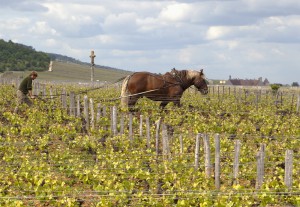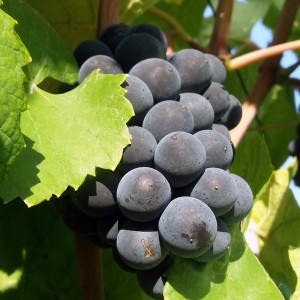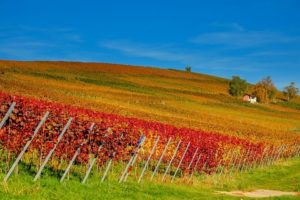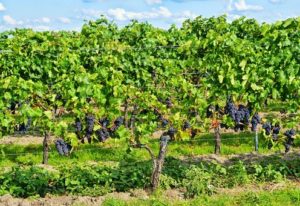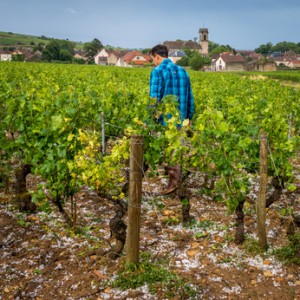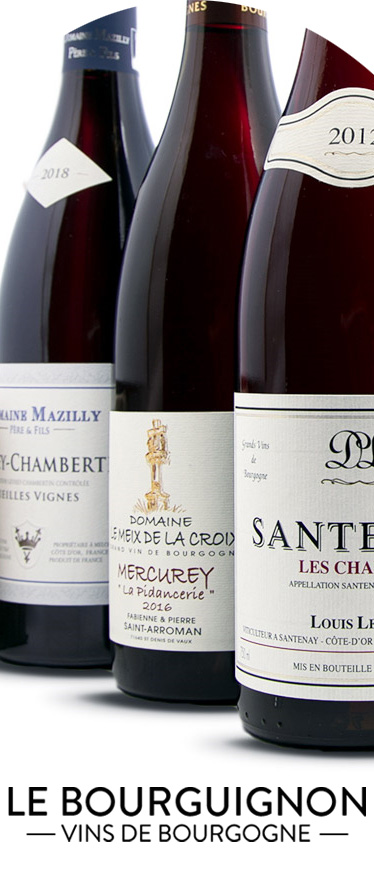Burgundy is a vineyard located in the departments of Yonne, Côte-d'Or and Saône-et-Loire.
Wine is born from grapes, produced by the vine!
Burgundy produces mainly white wines (62%), red wines (29%), white or rosé Crémants de Bourgogne (9%) and rosé wines (1%).
Today there are a large number of grape varieties (variety of vine plant), from the family Vitaceae, species of sarmentose shrub vitis vinifera. In order to produce unique wines, adapted to the terroir (the nature of the soil, the climate,…), the Burgundy winegrowers have selected the best vines adapted to each plot.
As you know the two great grape varieties of Burgundy are Chardonnay, used for white wine and Pinot Noir, used for red wine.
A very large part of Burgundy wines are monovarietals (i.e. only one grape variety is used during the elaboration of the wine).
Which grape variety in Burgundy?
The secrets of the king grape varieties of Burgundy
-
Le Chardonnay
Chardonnay is a Burgundy plant that produces pretty golden clusters, its grains are small but rich in a deliciously sweet white juice. This grape variety is found in the greatest white wines of Chablis, Côte de Beaune, Côte Chalonnaise and Mâconnais.
Chardonnay has a very nice ability to adapt to different types of soils (a preference for clay-limestone marls), while offering unique styles thanks to the terroir in which it is produced. Such as the richness of its soil, its exhibition, its appellation and many others…
This grape variety is incredible, from one region to another, the wines are all different for our greatest pleasure !
In Chablis, Chardonnay offers a very dry wine with a beautiful minerality, while in the Mâconnais the wine is tender, fresh, with notes of white flowers and a beautiful acidity in the finish.
In Côte de Beaune, it offers great famous white wines such as Meursault, Corton-Charlemagne and Bienvenue-Bâtard-Montrachet ! At the time of tasting these wines are opulent, well balanced between fat and acidity, structured with brioche aromas, butter, honey and a very nice length in the finish.
In Côte Chalonnaise, it is a wine marked by notes of lemon, flower, yellow fruit, brioche with a beautiful saline acidity at the end of the mouth.
-
Le Pinot Noir
Pinot Noir produces great red wines of renown, it is recognized with its small grains with fine skin, delicate, purplish black color, they contain an abundant, colorless and sweet juice. It is at the time of maceration and fermentation in vats, that the coloring matter contained in the skin of the grape berries, gives the wine its pretty red hue.
Pinot Noir adapts very well to the calcareous, stony and marly soil of Burgundy, not too deep, well drained and well exposed, between 250 and 300 meters above sea level. This grape variety is grown mainly in the vineyards of the Côte de Nuits, the Côte de Beaune and the Côte Chalonnaise.
Depending on its terroir, Pinot Noir will offer different wines , many famous appellations are made from this variety of grapes such as Gevrey-Chambertin, Chambolle-Musigny, Romanée-Conti.
This grape variety offers very beautiful wines with great richness, a beautiful aromatic complexity, notes of red fruits (strawberry, raspberry, cherry,…), empyreumatic notes (tobacco, toast, smoked, …), vegetable (wet leaves, mushrooms,…), in the mouth a beautiful intensity, the tannins are of incredible elegance, delicate with a beautiful freshness and a beautiful structure.
The great red wines of Burgundy such as Charmes-Chambertin, Clos Vougeot or Clos des Lambrays are complex, powerful with a very good ageing capacity.
Secondary grape varieties
The famous aligoté grape variety, used during its aperitif kir white wine flavored with the crème de cassis de Bourgogne. What a delight!
Aligoté, an old Burgundy grape variety, is recognizable by its grapes since they are larger and more numerous, yellow-orange in color unlike Chardonnay.
This grape variety is planted from Chablis to the Mâconnais, used in the regional AOCs Bourgogne-Aligoté, the Coteaux Bourguignons, the Crémants de Bourgogne and the AOC Village de Bouzeron in the Côte Chalonnaise (this is an exception for the latter, since normally the wine never bears the name of the village where it is grown).
It is a white wine of pale yellow color, with golden reflections, on the nose a floral and fruity bouquet (peach, green apple, citrus, …).On the palate, it is appreciated for its freshness and gluttony !
The aligoté is perfect for an aperitif, a lunch with friends with a seafood platter, white meats, steamed vegetables and why not fresh cheeses like goat. A delight!
-
Le Sauvignon Blanc
Sauvignon Blanc de Bourgogne has been a village appellation since 2003 from the Auxerrois vineyards, in the Yonne (1200 hectares). Planted on Saint-Bris-le-Vineux, Chitry, Irancy, Quenne and Vincelottes with a limestone terroir, exposed to the north, we recognize its compact clusters with small berries of golden yellow color.
The Sauvignon grape variety offers a light white wine on the fruit, called Saint-Bris. The pale yellow color with gold reflections, notes of citrus (grapefruit,…), exotic fruits (lychee, …) and blackcurrant leaves crumpled on the nose. On the palate, it develops a lively wine that awakens the taste buds. Excellent on youth!
-
The Gamay
Gamay represents 11% of the vineyard area of Burgundy, mainly in the Mâconnais. This grape variety is planted on acidic and granitic soils unlike Pinot Noir.
The Gamay grape variety can be blended with Pinot Noir to bring color and notes of gooseberry for different appellations such as Mâcon, Bourgogne Passe-Tout-Grains, Coteaux Bourguignons and some Crémants de Bourgogne.
The wines from gamay have a beautiful red color with purple reflections, aromas of red fruits (currant, strawberry, raspberry,…) and black fruits (blackcurrant, blackberry, blueberry, …), in the mouth the tannins are little present and a good acidity in the finish.
After a few years of aging, the wine evolves, a dark ruby color, with a nose of prune and spicy notes. In the mouth the tannins are silky and pleasant.
It can be enjoyed with cold cuts, meats such as rabbit, andouillettes, or desserts with red fruits.
-
The Caesar
The Caesar grape variety is present in the Yonne only, it is used during the elaboration of red wines and rosé wines but it can only represent 10% of the grape variety. This grape variety represents less than 1% of the surface of the Burgundy vineyard.
Here are the different appellations authorizing the Caesar grape variety :
- Burgundy Chitry
- Burgundy Côte Saint-Jacques
- Burgundy Côtes d'Auxerre
- Burgundy Coulanges la Vineuse
- Burgundy Epineuil
- Irancy
- Burgundy Hillsides
The Caesar grape variety is associated with Pinot Noir to bring a more colorful color, a more pronounced fruity side (red fruits and black fruits) with a beautiful presence of tannins and a certain length in the mouth when tasting a red wine.
Grape varieties on the verge of extinction …
-
The Melon de Bourgogne
The Burgundy winegrowers continued to cultivate the Burgundy melon grape variety discreetly, since Philip the Bold, Duke of Burgundy had asked to destroy all the feet of this grape variety.
It is planted mainly in the Yonne, used for the Coteaux Bourguignons or the Crémants de Bourgogne.
It offers a low acidic wine, well balanced with discreet and very pleasant aromas.
-
Le Pinot Blanc
The Pinot Blanc grape variety, mutated from Pinot Gris is almost a memory but still present in the Burgundy vineyards. Unfortunately not very productive due to the drip (fall of the flowers of more than 50%, which leads to a loss of harvest).
-
Le Pinot Beurot
The Pinot Beurot grape variety is the old name for Pinot Gris used for white wines, but is gradually disappearing. We recognize its grapes of pink gray color, giving a golden wine, very floral with a beautiful roundness. It can be drunk as an aperitif and will marinate very well with fish or white meat.
It is planted mainly in the yonne department, under different names :
- Burgundy
- Burgundy Clairet or Burgundy Rosé
- Burgundy grand ordinaire or Burgundy ordinaire
- Crémant de Bourgogne

